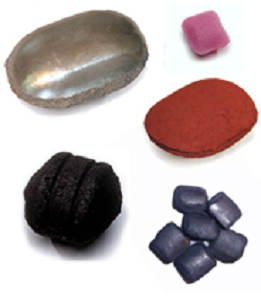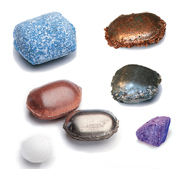Briquetting Technology of Metallurgical Ore Powder
Metallurgical ore powder briquette is a new type of furnace charge introduced in recent years. Because of its environmental protection and energy-saving characteristics in the production and use process, it is widely used in iron and steel, and ferroalloy enterprises instead of lump ore for smelting. The preparation of metallurgical pellets is an important part of the metallurgical process, which can not only improve the metallurgical physical and chemical properties of materials but also realize the resource utilization of industrial solid waste and an important way of the circular economy. Therefore, pelletizing technology is an important way to realize energy saving, environmental protection, and utilization of waste resources. The cold-pressed pellets prepared by this technology are also used as a burden for blast furnaces, direct reduction furnaces, cupola furnaces, and submerged arc furnaces.


Briquetting Process
Adopting cold briquetting technology, the raw material powder is mixed with about 2% GY mineral powder forming binder, formed by a briquette machine, and then dried.
The mineral powder binder (iron ore powder, manganese ore powder, iron scale, iron-containing dust mud, etc.) is respectively loaded into the batching silo and sent to the mixer for mixing through electronic metering. And then the mixture enters the briquette machine, and the pressed briquettes will be dried (or naturally dried) by the dryer to get the final product.
Briquetting Equipment Configuration
1. Batching machine: 1 set of 2 ~ 3 buckets (automatic metering); 2. Mixers: 2 sets (horizontal mixers); 3. Molding machine: 1 set (briquette machine); 4. Dryer: 1 (vertical); 5. Belt conveyor: 3-5 (500 ~ 800cm); 6. Power control and operation: 1 set.
Briquette Machine Operation Method
1. Send iron-containing powder into batching silo respectively.
2. After proportional electronic metering, the mixture is transported from the batching machine to the mixer for mixing.
3. Add 10% liquid curing agent (solid is processed into liquid) in mixer.
4. After the material is evenly mixed (it is advisable to hold it into a ball by hand), it is sent to the briquette machine for forming with a conveyor belt.
5. The formed briquettes can be applied by drying at 150 ℃ (or naturally drying).




